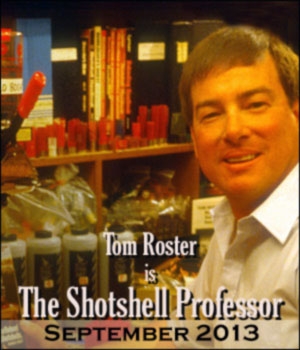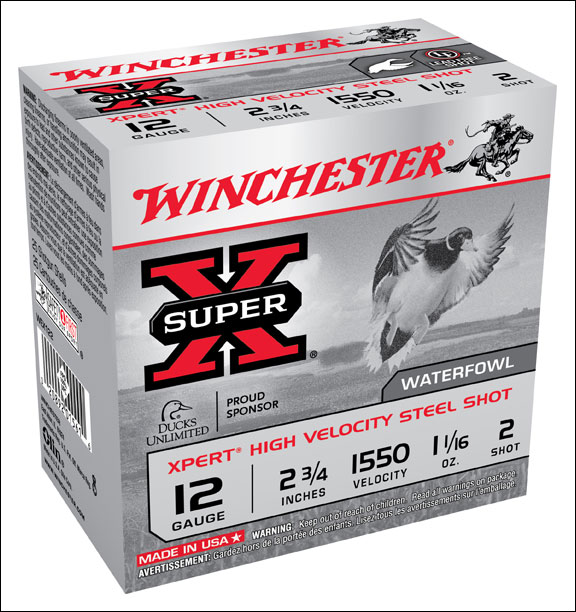Does Speed Kill?

All shotshell manufacturers now have them: high velocity steel loads. You probably already know that most steel loads have higher instrumental velocities than most lead loads. Well, each company now offers even faster steel loads.
The idea is not new, but the loadings are. If you search any shotshell manufacturer’s catalog you can now find 10, 12 and 20 gauge steel loadings with velocity levels above 1400 fps, up to 1675 fps. Are these high velocity loadings more effective than slower loadings?
The honest answer for most applications is: maybe. Another important answer is that for some shooting styles, yes; for other styles, no. Let’s examine the details.
The first important fact to recognize is that the physics of balls is not the same as the physics of bullets. This is particularly true where downrange retained velocity and energy are concerned. If one starts a pointed bullet with 150 fps greater instrumental velocity than another bullet of equal mass and shape from the same rifle bore, down at 60 yards it is highly probable that the 150 fps faster bullet will retain almost that full 150 fps increased velocity and thus momentum advantage over the slower bullet.
 All shotshell manufacturers now offer high velocity nontoxic shot loads – especially steel – with velocities well in excess of 1400 fps. How long this trend will continue remains to be seen.
All shotshell manufacturers now offer high velocity nontoxic shot loads – especially steel – with velocities well in excess of 1400 fps. How long this trend will continue remains to be seen.This is not true of balls. If two balls of the same shape and mass are started with one ball having a 150 fps greater instrumental velocity over the other ball, unfortunately at 40 yards, for example, the 150 fps initially faster ball will have shed the majority of the 150 fps velocity and momentum muzzle differential advantage over the slower ball.
Why is this true? The answer is that with balls the greater the velocity at which a ball is initially launched, the greater the rate at which it loses velocity. This is due to the poor aerodynamic shape of balls. The net effect of increasing the initial launch velocity of balls is that greater air resistance is created ahead of them. They are forced, therefore, to slow down more rapidly than balls launched at slower initial velocities. Since shotshell pellets are largely ball-shaped, this inescapable law of physics hugely inhibits the value of high velocity for shotshell loads.
If you doubt this irrefutable law of physics, simply consult any downrange ballistics table for any shot type – lead, steel, bismuth, whatever. You will see that any increase in velocity and retained energy which exists at the muzzle between a faster launched ball versus a slower one degenerates exponentially over distance. For example, at 60 yards the majority of the differential enjoyed by the faster-launched ball at the muzzle will be virtually gone.
Is it, therefore, spurious to load high velocity steel loads? Consider the facts and then you decide. First, we now know that any higher launch velocity and per-pellet retained energy at the muzzle are rapidly being lost with distance. Second, with increased velocity comes greatly increased levels of recoil. Third, because of the poor aerodynamic shape of shotshell pellets – even very spherical ones – a little pattern testing quickly reveals that the patterns of high velocity shotshell loads – regardless of metal type – are seldom as good as the patterns of lower velocity shotshell loads. Fourth, to achieve higher and higher velocities in shotshell loads, shot charge weights have to be reduced to keep pressure levels from exceeding the current maximum allowable pressure limits. So high velocity loads generally also have smaller payloads than standard velocity loads.
On the positive side there is one possible plus. Depending upon an individual’s shooting style, 100 to 200 fps higher initial launch velocities can alter some individuals’ “leads.” Some hunters experience increased hitting success while others experience decreased initial hitting success with higher velocity loadings. You won’t know until you try them.
My decades of lethality testing of lead and nontoxic shotshell loads for taking waterfowl and upland game birds have revealed the science-based reality that with lead and nontoxic tungsten-composite pellet hunting loads possessing lead shot equivalent pellet densities, all you need for effective (spelled: lethal) velocity is something near 1250 fps ± 50 fps. For steel loads, all that is needed is something near 1350 fps ± 50 fps. Launch velocities in excess of these benchmarks have not proven to increase lethality, but do help some shooters with their leads and thus hitting success.
So, one has to be quite conservative in selecting a high velocity shotshell load, or there is very little practical benefit. In fact, the benefit can become largely psychological. This is especially true if the shotgunner remains ignorant of the irrefutable laws of the physics of balls, never takes the time to pattern test his or her ammunition, and ignores the erosive effects on one’s shooting success caused by the ever higher recoil levels of higher and higher velocity shotshell loadings.
Tom Roster is an independent ballistics consultant and author specializing in the design and testing of shotshell loads for U.S. shotshell and reloading components manufacturers. He is a court-recognized shotshell/shotgun expert witness. Tom was formerly the Ballistics Research Director at Oregon Institute of Technology and then served as a Ballistics Specialist for the Dept. of the Interior. In these capacities he designed and administered the world’s six most extensive lead versus nontoxic shot duck, goose, pheasant and dove shooting tests ever conducted. He then co-authored their peer-reviewed scientific reports. Roster spends about 100 days afield each year testing lead and nontoxic hunting and target shotshell loads, then traveling worldwide reporting on his findings to industry and wildlife professionals, hunters and shooters, and in his writings for various shotgunning magazines. Contact him in Oregon at (541) 884-2974, tomroster@charter.net.

Tom Roster is an independent ballistics consultant and author specializing in the design and testing of shotshell loads for U.S. shotshell and reloading components manufacturers. He is a court-recognized shotshell/shotgun expert witness. Tom was formerly the Ballistics Research Director at Oregon Institute of Technology and then served as a Ballistics Specialist for the Dept. of the Interior. In these capacities he designed and administered the world’s six most extensive lead versus nontoxic shot duck, goose, pheasant and dove shooting tests ever conducted. He then co-authored their peer-reviewed scientific reports. Roster spends about 100 days afield each year testing lead and nontoxic hunting and target shotshell loads, then traveling worldwide reporting on his findings to industry and wildlife professionals, hunters and shooters, and in his writings for various shotgunning magazines. Contact him in Oregon at (541) 884-2974, tomroster@charter.net.


Comments